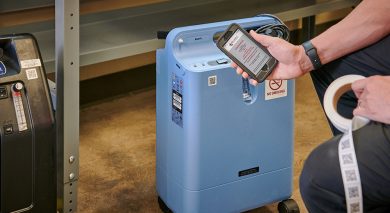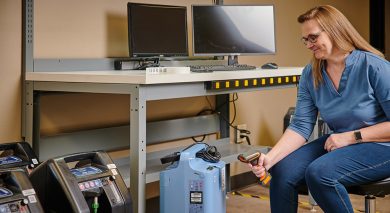Be Prepared. You’ve likely heard this Boy Scout motto numerous times. And it never proved truer than for healthcare providers in the past few years. Our industry keenly learned about the need for quality medical devices to be ready and delivered at a moment’s notice.
But can you ever really plan for the unknown? How do you prepare and foresee future needs? How can you afford to have the right equipment ready when and where you’ll need it in the midst of ever-changing patient demands? The answer lies in a streamlined logistics solution, one that gets critical medical devices to patients, and frees you up to focus on your core business.
COVID Lessons
When COVID hit, the entire healthcare industry was thrown into a tailspin with a crash course in emergency preparedness. With respiratory equipment at never-before-seen peak demands, weaknesses in processes and supply chains were quickly revealed.
With health concerns including respiratory illnesses, colds and the flu gearing up in the coming months, the time is now to get into position and be prepared for what is coming. Here are 5 key lessons the healthcare industry learned from the recent past that we can apply in the future to be better prepared:
- To respond to emergency demands, equipment needs to be ready and delivered at a moment’s notice.
- Healthcare providers must have what they need when they need it. Medical equipment must be stored, together with all of its accessories, in a temperature-controlled environment.
- Batteries must be charged, checked, and replaced on a regular schedule.
- Equipment must get where it’s needed, with same-day deployment processes in place to get equipment to its destination on demand.
- When a device is no longer needed or has broken, there needs to be a simple procedure for the return, receipt, testing, cleaning, and storing of the equipment so it is ready for the next deployment.
Meet Economic Uncertainty Head On
Fall flu season is not the only thing on the horizon to prepare for. Wise business and healthcare leaders are looking for ways to prepare for an upcoming recession, so as to maintain the health of patients while balancing the impacts on business. A few tips to come out on top include:
- Reduce capital expenditures.
Instead of buying new, extend the life of what you own. The first step is a proper inventory: know what you have. Then make sure it’s working and find out what it will take to get all operable.
- Move spending to operational expenses.
Put in place processes to clean, repair, and maintain equipment to maximize its lifetime value. Consider outsourcing as a way to have logistics handled, including storing equipment in warehouses throughout the country, closest to anticipated demand spikes.
- Manage efficiencies.
Optimize your dollars the best way you can by looking for better workflows and working with vendors to build better processes together. Consider renting equipment to fill gaps instead of increasing CAPX by purchasing more depreciable assets. Discuss ways to deliver directly to your patients, thereby removing your administrative overhead.
National fleet management is the most efficient, cost-effective solution to prepare for leaner times and tighter budgets. It is truly a new era for healthcare equipment management and forward-thinking leaders are looking at how equipment is procured, managed, and delivered through a new lens.
Help is Here
Equipment service management may be one of the most overlooked areas for business improvement, yet one that yields some of the greatest ROI. Quality Biomedical executes world-class equipment management programs, thereby transforming medical equipment service and replenishment into a strategic advantage. By integrating and managing smart logistics, operations, and workflows, we significantly improve operational efficiencies for HMEs/DMEs, EMS, LTACs, hospitals, nursing homes and SNFs, cancer and dialysis centers, and OEMs.
Our mission is to help healthcare organizations and OEMs gain insight and extend the life of their durable medical equipment, with simple and streamlined solutions. Give us a call. We begin with a business process assessment that delivers recommendations for ways to get in control of your inventory and remove unnecessary costs. We then design a solution that meets your unique needs and priorities.
With flu season just around the corner, and an uncertain economy ahead, there’s no time to waste. Let’s talk today so you can finish 2022 strong and go into your 2023 budget planning with a clear and streamlined solution for your medical equipment fulfillment needs.



